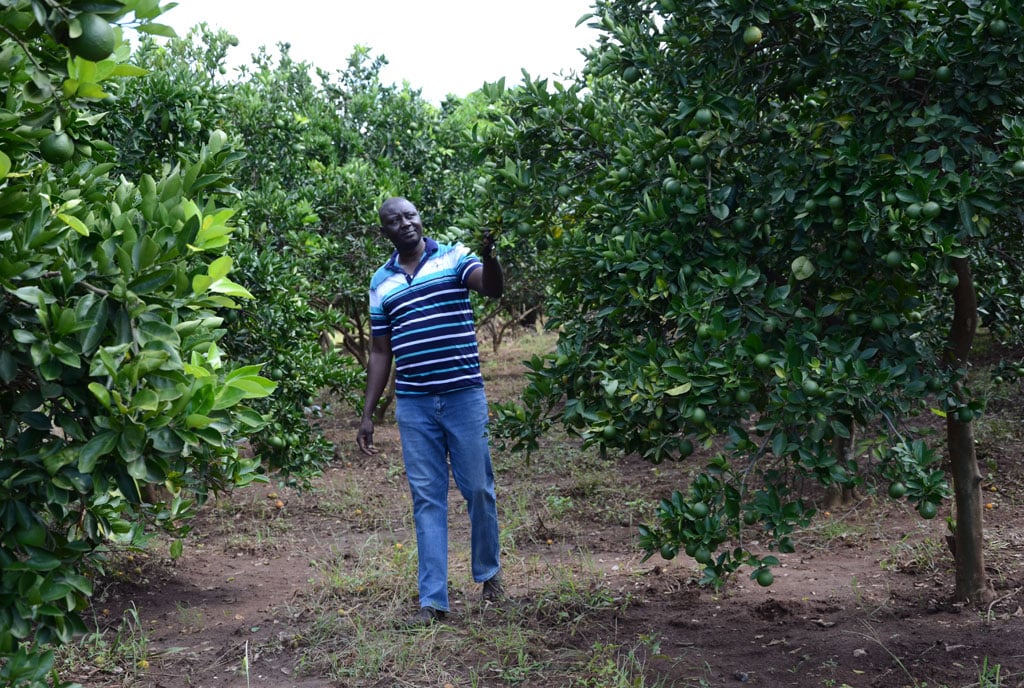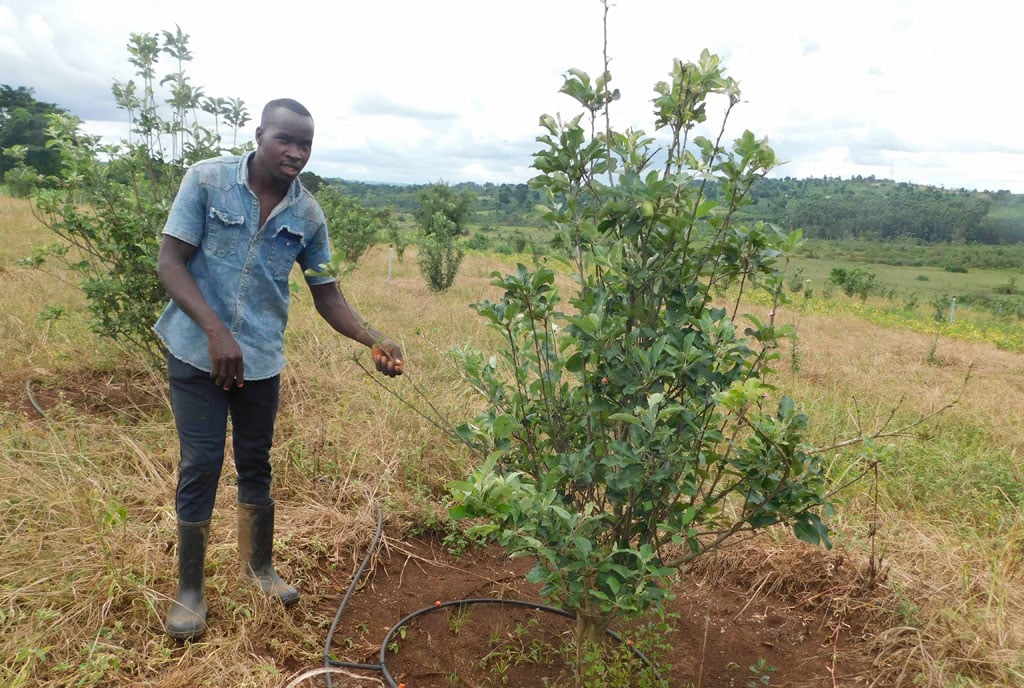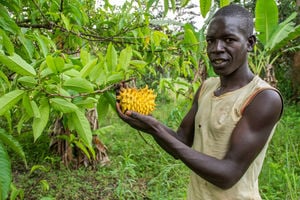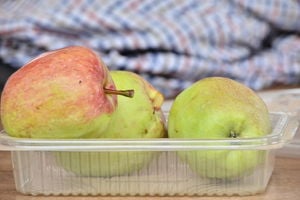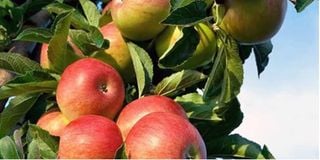
Apples
Apple farming has also become a major source of fruit nutrition to small holder households that were previously entangled in fruit nutrient malnutrition. Apples are a rich source of vitamins A, B, and C, large amount of proteins, carbohydrates, minerals, fiber and phenolic compounds useful in wound healing
Apple farming in Uganda started about two decades ago dating to initial trials in highlands of Kigezi in 1999 by the National Agricultural Research Organisation (Naro) in partnership with the International Centre for Research in Agroforestry (ICRAF, now World Agro Forestry Centre) and Forestry Research Institute (FORI).
Twenty-four varieties were introduced including Apple Anna, Golden Dorset, Granny Smith, Fuji, Shilomit, Mayae, James Grieve, Michael, Sharp Early, Rome Beauty, and Winter Banana, among others.
The first on-farm apple orchards were established four years after on-station trials at Bugongi, Kalengyere and Kachwekano in Kigezi and yields of over 100 fruits were obtained per tree per year. This created enthusiasm among farmers raising demand for planting materials. Following the high demand for planting materials, the Government of Uganda in partnership with private seed companies, has since 2014 supplied over three million seedlings to farmers across the country.
Through participatory assessment of yield and fruit quality indicators, Anna and Golden Dorset recorded yields of over 300 fruits per tree and were officially released in 2010 for wide cultivation in Uganda. Apple growing has spread to other regions of Uganda such as Rwenzori and Elgon highlands, mid-altitude areas of Buhweju in Ankole Sub-region and central Uganda. To-date over 100,000 farmers have been supported with seedlings, trainings and technical backstopping by govern organisations including but not limited to MAAIF, Naro, Naads and Operation Wealth Creation (OWC).
According to the economic analysis of apple farming in Kigezi publication by Ntakyo and others in 2013, apple farming was reported as a profitable enterprise generating more than Shs10m per acre per annum.
The apple productivity and market survey by Naro and Uganda Breweries Limited of 2022 found that apple farming has a 20 times return to investment, with more than 25 million fruits worth 3,000 metric tonnes produced per year in farms in western Uganda. At the current price of Shs1,000 per fruit, apple farming generates about $5m annually.
Apple farming has also become a major source of fruit nutrition to small holder households that were previously entangled in fruit nutrient malnutrition. Apple fruits are a rich source of vitamins A, B, and C, large amount of proteins, carbohydrates, minerals, fiber and phenolic compounds useful in wound healing.
Nevertheless, Uganda continues to loose substantial foreign exchange through apple importation with over $6 million spent in just two years (2018 to 2019) (FAO Stats, 2020). Also, productivity remains low at 150 – 300 fruits per tree per season versus the potential of 400 – 600 fruits per tree per season and there is increasing orchard abandonment due to lack of standardised apple management, rampant pests and diseases, ineffective agrochemicals and post-harvest handling technologies, limited value addition to locally produced apple fruits, farmers’ limited knowledge of recommended apple management practices and limited access to extension services and research support, plus weak linkages to formal markets.
These constraints hinder sustainable profitability of apple farming enterprises in Uganda. To overcome some of these challenges, Naro is conducting research to optimise apple management practices that double orchard fruit productivity from 20 to 40t/ha leading to production of more than 12,000 metric tonnes of fruits annually.
We shall also develop value added prototypes for apple products with industrial applications soil fertility and tree nutrition protocols for enhanced apple productivity. Development of rapid seed multiplication technologies for apple seedlings using tissue culture and trench layering technologies is also our priority.
These interventions will double apple productivity, develop commercially viable product prototypes and save the country more than $2m dollars in apple imports annually.
The writer (DR JEROME KUBIRIBA) is a senior research officer at Naro’s KaZARDI
